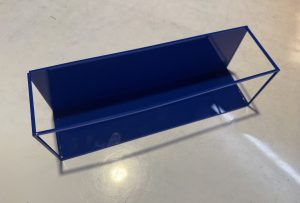A possible risk is that our custom PCB breaking out the mini PCIe pins from the LoRaWAN gateway does not work. This could happen because either the manufacturing of the PCB was faulty, or the design of the PCB causes too much interference/noise that affects the signals negatively. To manage this risk, we ordered multiple PCB boards to reduce the risk of manufacturing mishap, and thoroughly reviewed our PCB design to make sure all rules pass.
The sensor box model is larger than the print bed of the 3d printer that we have access to. In order to accommodate this, we will probably be splitting the model in half with connectors in the middle, but there is a chance that this will create a weak point in the SNIFF Visor that will collapse when the Visor is mounted to the basket. We plan to cover the box with a sealant to make it water-tight, which may strengthen this weak area and lessen this risk.
We had to change how we will be connecting the cellular board to the Sniff Station’s raspberry pi. This change was necessary because there was an incompatibility between the intermediate board we were planning on using and the cellular board. To address this we will be making a custom pcb that will break out the mini PCI-E connector to a set of headers that we will then use to connect to the raspberry pi. This will be at a total cost of $35 which can comfortably fit within our budget.
No changes have been made to our schedule with the exception of Jae taking the pcb design task which has already been completed.










0 Comments